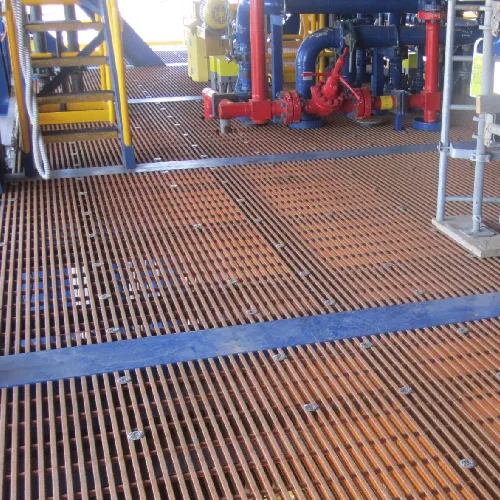loading...
- No. 9, Xingyuan South Street, Dongwaihuan Road, Zaoqiang County, Hengshui, Hebei, China
- admin@zjcomposites.com
- +86 15097380338
- Welcome to visit our website!
Fiber Reinforced Plastic Rods for Enhanced Strength and Durability in Various Applications
Fiber Reinforced Plastic Rods A Comprehensive Overview
Fiber Reinforced Plastic (FRP) rods have emerged as an innovative solution in various industries, owing to their unique properties and versatility. These rods, which combine the lightweight characteristics of plastic with the strength of fibers, are increasingly being utilized in construction, automotive, aerospace, and many other fields.
What is Fiber Reinforced Plastic?
Fiber Reinforced Plastic is a composite material that consists of a polymer matrix reinforced with fibers. The fibers, often made from materials such as glass, carbon, or aramid, serve to enhance the mechanical strength and durability of the plastic. When combined, these materials provide a composite that boasts an impressive strength-to-weight ratio, corrosion resistance, and overall robustness.
Key Properties of FRP Rods
1. Strength and Durability FRP rods exhibit high tensile strength, making them suitable for applications that require sturdiness and durability. The fibers reinforce the plastic matrix, enabling these rods to withstand significant stress and fatigue.
2. Lightweight One of the standout features of FRP rods is their lightweight nature. This characteristic is especially beneficial in industries like aerospace and automotive, where reducing weight can lead to improved fuel efficiency and better performance.
3. Corrosion Resistance Unlike traditional materials such as steel, FRP rods are impervious to a range of environmental factors, including moisture, chemicals, and UV radiation. This corrosion resistance makes them ideal for use in harsh environments, such as in marine or industrial applications.
4. Thermal and Electrical Insulation FRP rods can act as effective insulators. Their thermal and electrical insulating properties make them suitable for applications where conductivity would be a concern, providing safety and stability in electrical systems.
5. Versatility FRP rods can be manufactured in various shapes, sizes, and colors to meet specific requirements. Their adaptability allows for a wide range of applications, from structural reinforcements to unique architectural designs.
Applications of FRP Rods
fiber reinforced plastic rod

FRP rods have found their place in numerous industries, highlighting their versatility and effectiveness
1. Construction In the construction industry, FRP rods are used for reinforcing concrete structures. Their lightweight nature allows for easier handling and installation, while their strength ensures that they can carry significant loads. Additionally, their corrosion resistance enhances the longevity of structures, especially in environments prone to moisture.
2. Aerospace and Automotive The aerospace and automotive sectors are increasingly adopting FRP rods to reduce weight while maintaining structural integrity. In aerospace applications, these rods help enhance fuel efficiency, whereas in the automotive industry, they contribute to improved performance and safety.
3. Marine Given their resistance to corrosion, FRP rods are widely used in marine applications, such as in boat manufacturing and pier construction. These rods can withstand exposure to saltwater and other harsh marine conditions, extending the lifespan of marine structures.
4. Electrical Engineering FRP rods are commonly employed in electrical engineering as insulators for power lines and other electrical applications. Their non-conductive properties prevent accidental electrification and reduce the risk of electrical failures.
5. Sports Equipment The sports industry has also benefited from the incorporation of FRP rods. From fishing rods to pole vaulting poles, the remarkable strength and lightweight nature of these rods enhance athletic performance while ensuring durability.
Future Trends
As technology progresses, the development and use of FRP rods are expected to expand further. Advances in manufacturing techniques, such as 3D printing and improved fiber-reinforcement technologies, may lead to even more efficient and robust products. Additionally, the demand for sustainable materials in manufacturing is driving interest in FRP rods, as they can be designed using recyclable materials, contributing to a reduced environmental footprint.
Conclusion
Fiber Reinforced Plastic rods represent a significant advancement in materials science, providing a unique combination of strength, lightweight design, and resistance to environmental degradation. Their diverse applications across various industries showcase their adaptability and importance in modern engineering. As research continues and technology evolves, FRP rods are likely to play an even more prominent role in future innovations, offering exciting possibilities for engineers and manufacturers alike.
-
GRP Structures: The Future of Lightweight, High-Performance EngineeringNewsJun.20,2025
-
FRP Water Tank: High-Performance Storage for Corrosive and Clean Water SystemsNewsJun.20,2025
-
FRP Square Tube: The New Industry Standard for Chemical and Structural ApplicationsNewsJun.20,2025
-
FRP Pultruded Profiles: The Ultimate Choice for Lightweight Structural StrengthNewsJun.20,2025
-
FRP Handrails: The Safer, Smarter, and Stronger Choice for Modern InfrastructureNewsJun.20,2025
-
FRP Grating: The Smart Solution for Durable, Lightweight Industrial FlooringNewsJun.20,2025
-
Why Choose a Galvanized Water Tank for Your Storage NeedsNewsMay.21,2025
